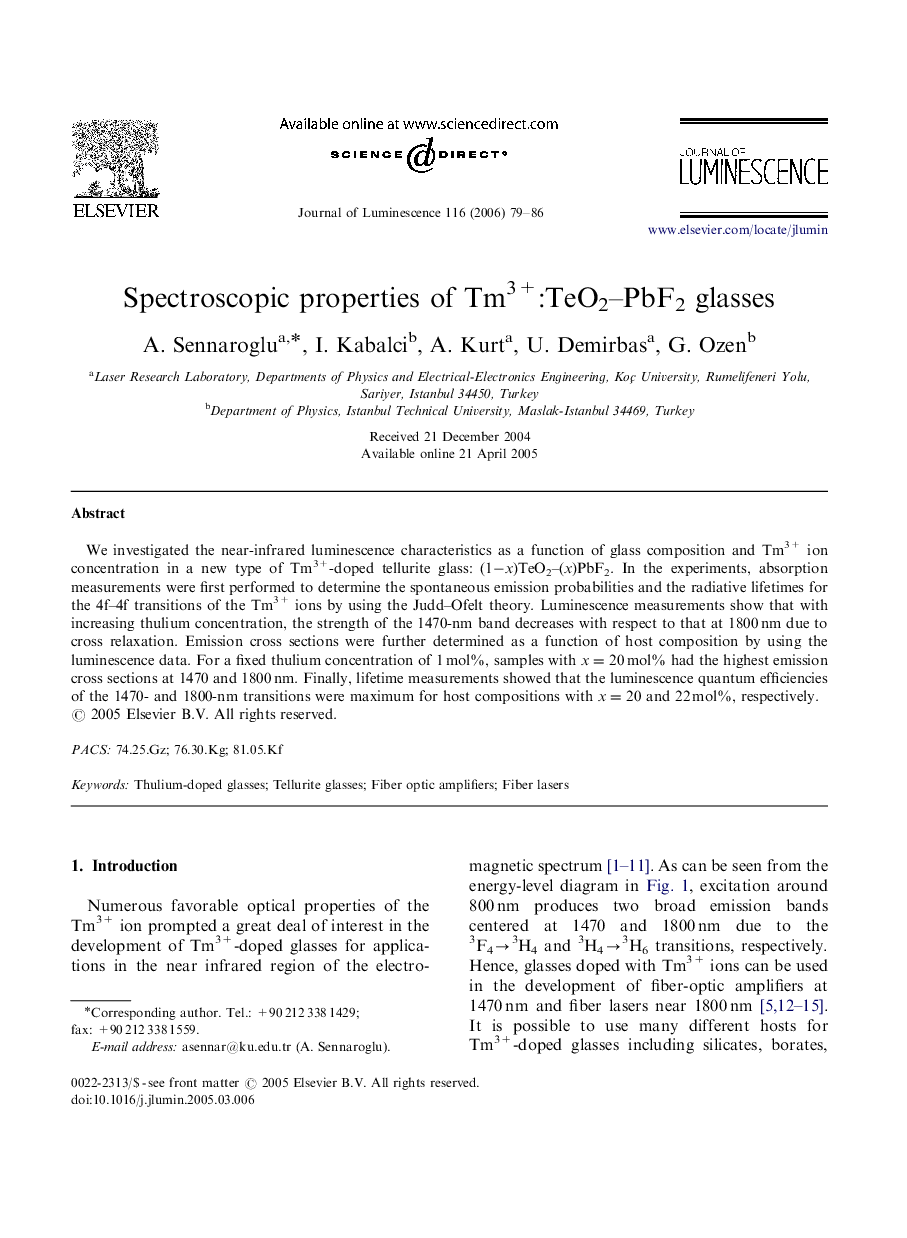| Article ID | Journal | Published Year | Pages | File Type |
|---|---|---|---|---|
| 5404402 | Journal of Luminescence | 2006 | 8 Pages |
Abstract
We investigated the near-infrared luminescence characteristics as a function of glass composition and Tm3+ ion concentration in a new type of Tm3+-doped tellurite glass: (1âx)TeO2-(x)PbF2. In the experiments, absorption measurements were first performed to determine the spontaneous emission probabilities and the radiative lifetimes for the 4f-4f transitions of the Tm3+ ions by using the Judd-Ofelt theory. Luminescence measurements show that with increasing thulium concentration, the strength of the 1470-nm band decreases with respect to that at 1800Â nm due to cross relaxation. Emission cross sections were further determined as a function of host composition by using the luminescence data. For a fixed thulium concentration of 1Â mol%, samples with x=20mol% had the highest emission cross sections at 1470 and 1800Â nm. Finally, lifetime measurements showed that the luminescence quantum efficiencies of the 1470- and 1800-nm transitions were maximum for host compositions with x=20 and 22Â mol%, respectively.
Related Topics
Physical Sciences and Engineering
Chemistry
Physical and Theoretical Chemistry
Authors
A. Sennaroglu, I. Kabalci, A. Kurt, U. Demirbas, G. Ozen,
